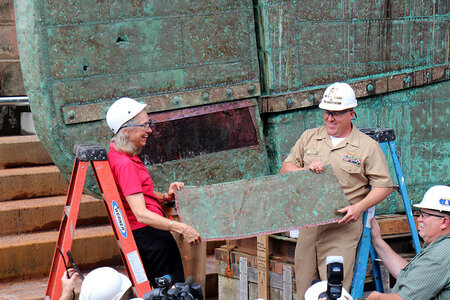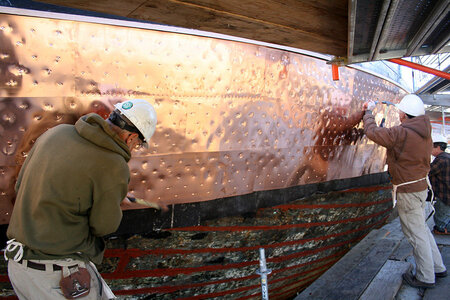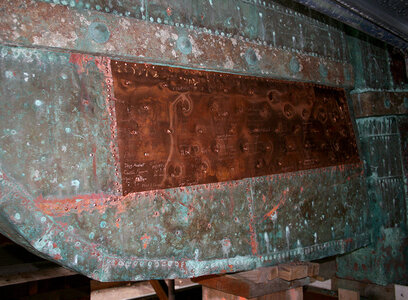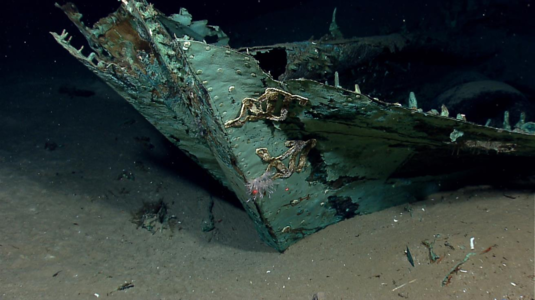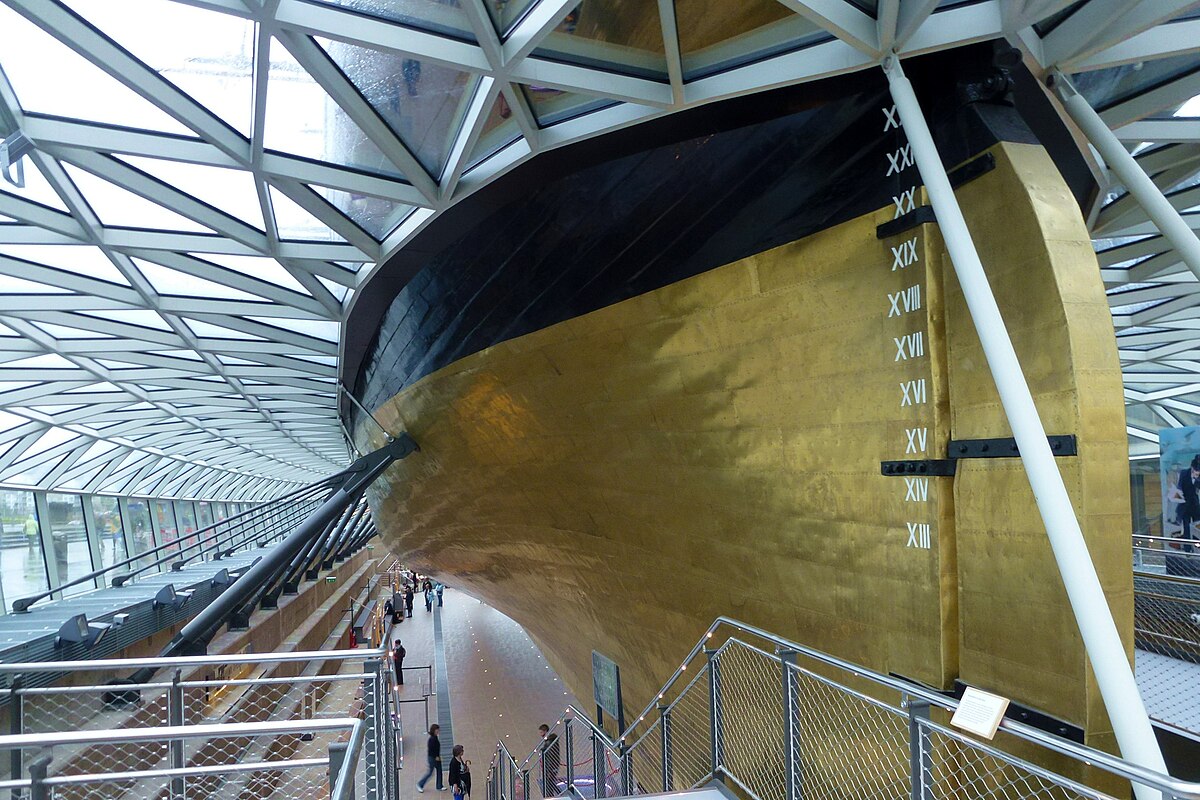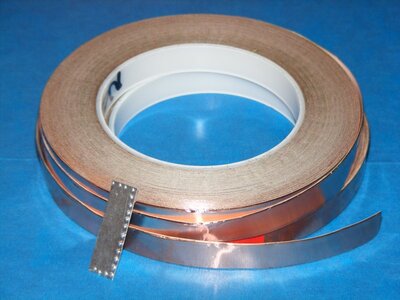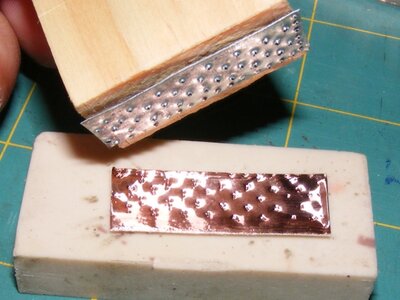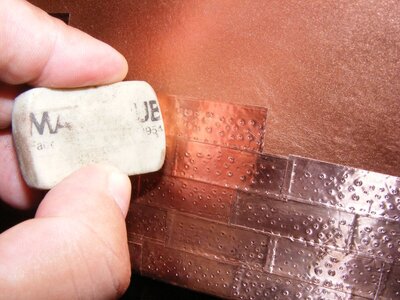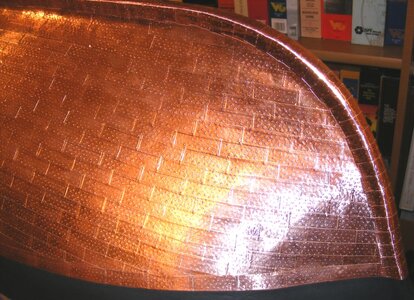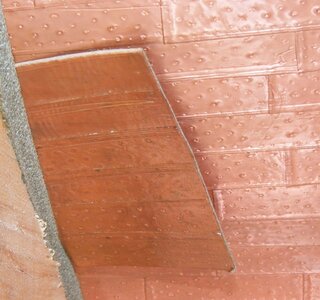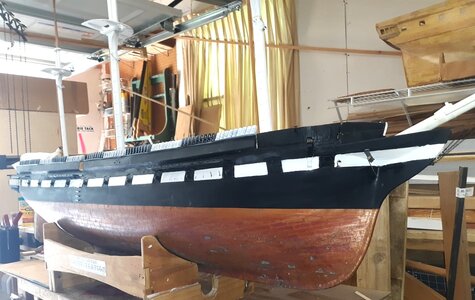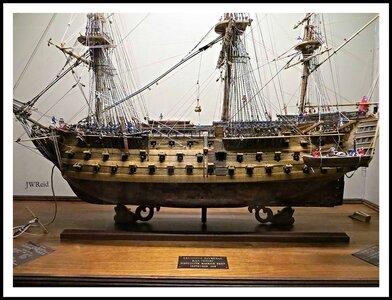I was reading a post on a facebook group that I am a member of and the author made a couple of good points about how nails should be represented on copper plates as follows:
According to the author, the nail heads on the original ships were about 1/4" wide and were spaced about 2 to 4 inches apart. This makes it quite difficult, if not impossible, to represent them to scale on the ship model.
Assuming my math is correct, lol:
so let's say i have a scale of 1:48 and the nails are spaced 4 inches apart.
Then, 4/12 = .333 ft
so, 1:48 => x:0.33
ie. x= 0.33/48 ft
hence, x= 0.0825 inches which is about 1/12th of an inch.
The author also commented that the nails were countersunk into the copper plates so representing the nails as bumps on the model's copper plates is not accurate.
What do you think?
According to the author, the nail heads on the original ships were about 1/4" wide and were spaced about 2 to 4 inches apart. This makes it quite difficult, if not impossible, to represent them to scale on the ship model.
Assuming my math is correct, lol:
so let's say i have a scale of 1:48 and the nails are spaced 4 inches apart.
Then, 4/12 = .333 ft
so, 1:48 => x:0.33
ie. x= 0.33/48 ft
hence, x= 0.0825 inches which is about 1/12th of an inch.
The author also commented that the nails were countersunk into the copper plates so representing the nails as bumps on the model's copper plates is not accurate.
What do you think?
Last edited:




